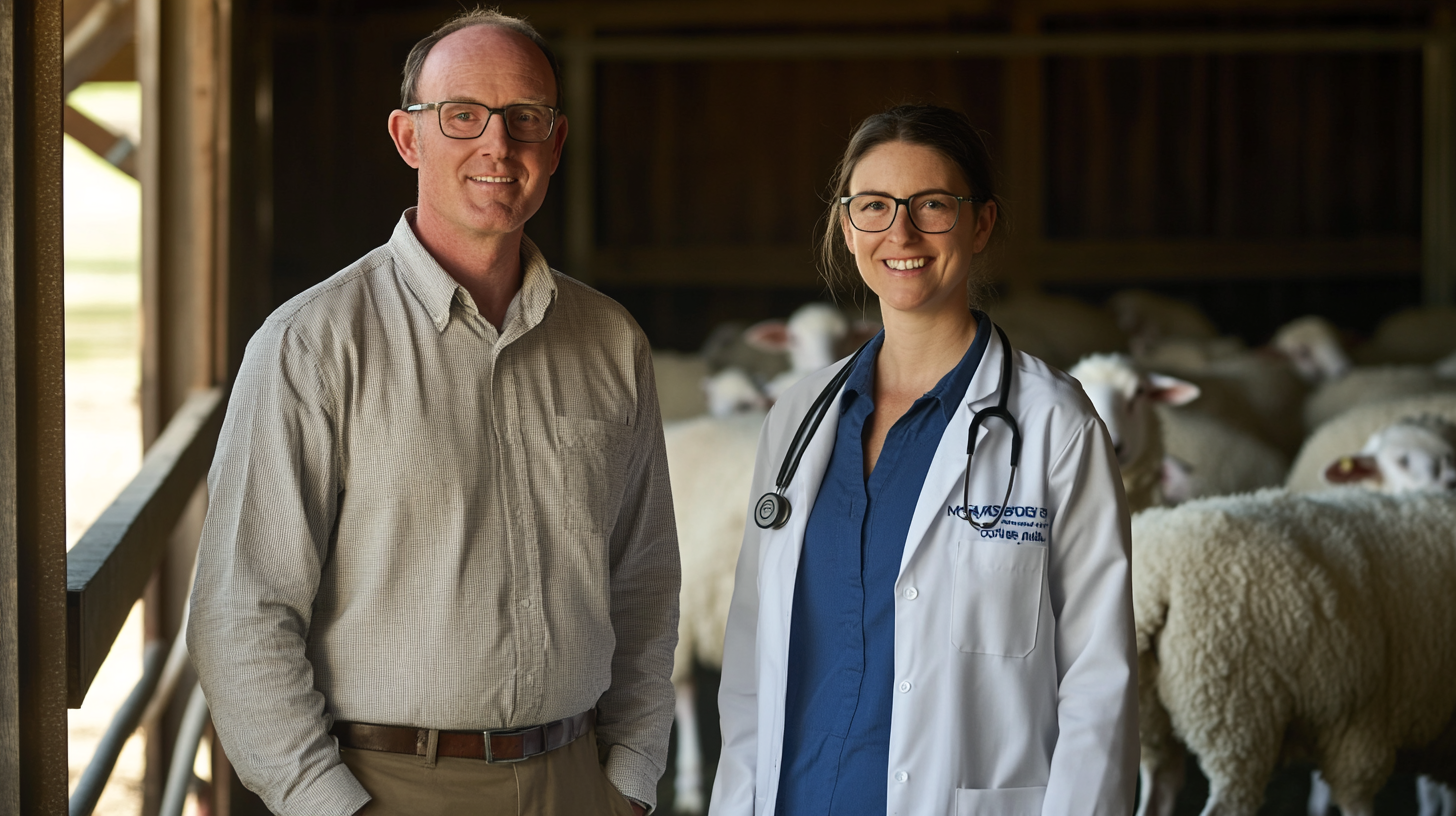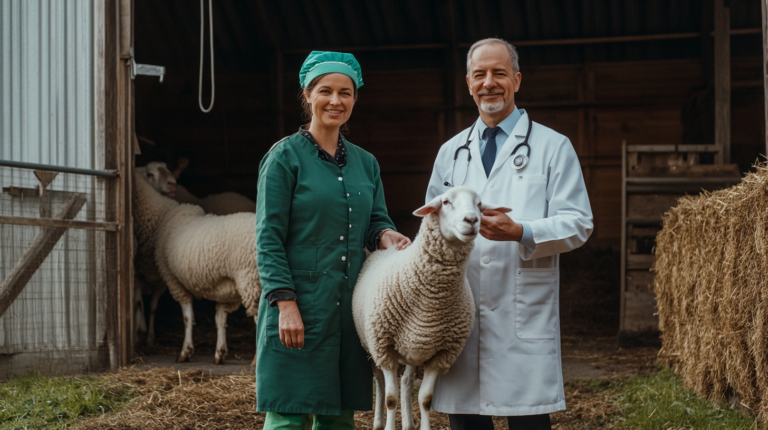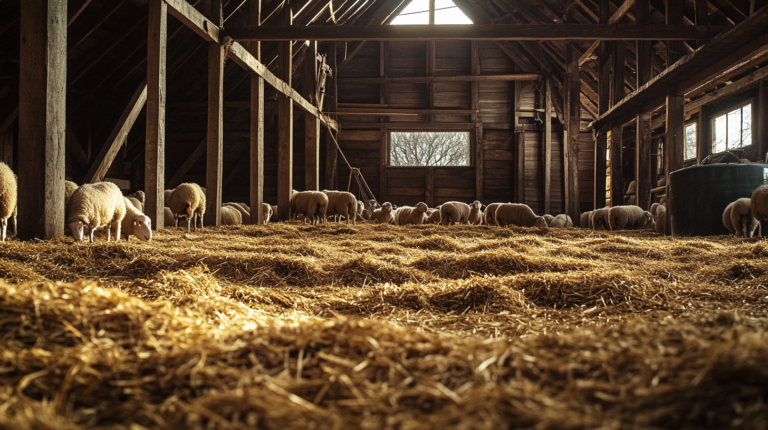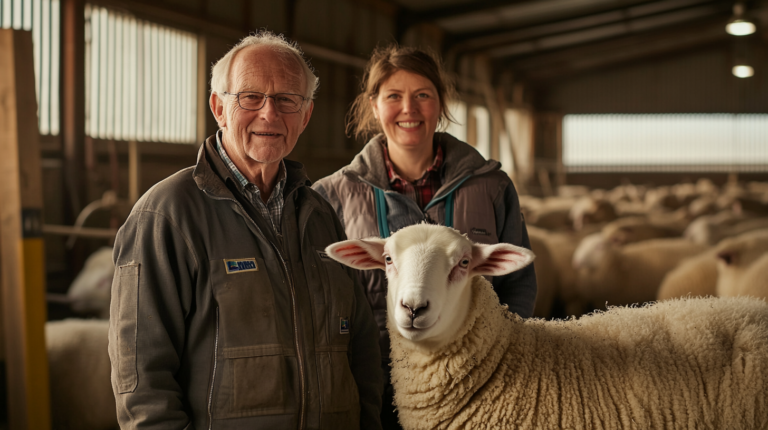Discover the 5 main causes of pneumonia in sheep, plus effective prevention strategies and treatment methods in this comprehensive guide for flock health management.
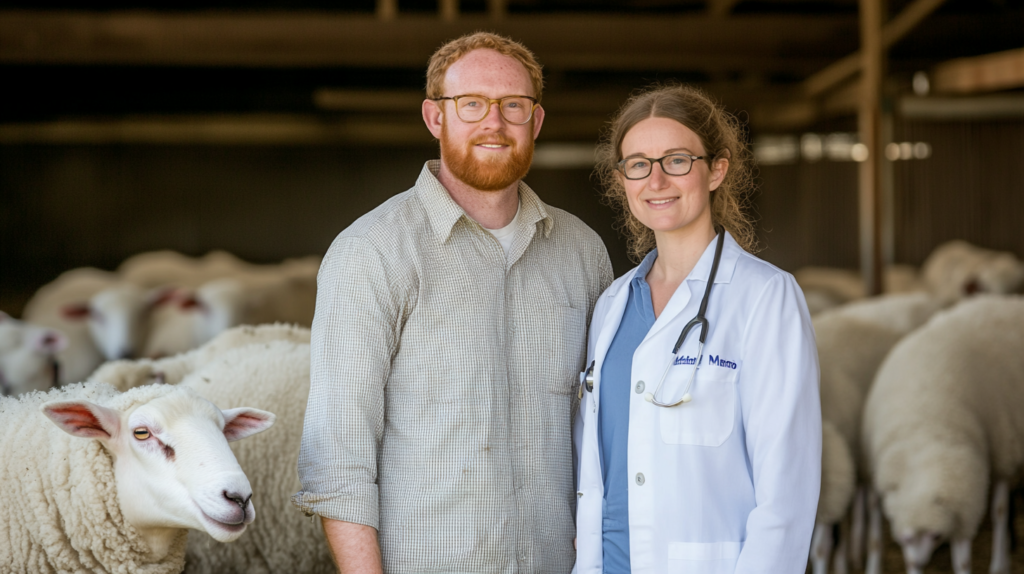
Table of Contents
Pneumonia in sheep represents one of the most significant respiratory diseases affecting flocks worldwide, causing substantial economic losses and welfare concerns for sheep producers. This respiratory infection, characterized by inflammation of the lung tissue, can spread rapidly through a flock and prove fatal if not promptly addressed. Whether you’re an experienced shepherd or new to sheep husbandry, understanding the causes, prevention strategies, and treatment options for pneumonia is essential for maintaining healthy and productive animals. This comprehensive guide delves into the five primary causes of ovine pneumonia, provides actionable prevention techniques, and outlines effective treatment protocols that can help protect your valuable livestock.
Understanding Pneumonia in Sheep
Pneumonia in sheep is a complex respiratory condition involving inflammation of the lung tissue, often accompanied by fluid accumulation in the lungs. This disease significantly impacts sheep health and productivity across various production systems worldwide.
What Exactly Is Ovine Pneumonia?
Ovine pneumonia refers to inflammation of the lung tissue in sheep, which can be caused by various pathogens including bacteria, viruses, parasites, and fungi. The condition disrupts normal respiratory function by causing:
- Inflammation of the alveoli (tiny air sacs in the lungs)
- Accumulation of fluid or exudate in the lungs
- Thickening of lung tissue
- Reduced oxygen exchange capability
Pneumonia can manifest in different forms, including:
- Acute pneumonia: Develops rapidly with severe clinical signs
- Chronic pneumonia: Develops gradually with persistent, less severe symptoms
- Atypical pneumonia: Presents with unusual symptoms or causative agents
Impact on Sheep Health and Productivity
The economic and welfare implications of pneumonia in sheep flocks are substantial:
- Mortality rates: Can reach 10-20% in severe outbreaks
- Production losses: Reduced growth rates of 30-50% in affected lambs
- Reproduction impacts: Lower conception rates and increased embryonic loss
- Treatment costs: Medication, veterinary services, and additional labor
- Market access: Restrictions on movement and sales of affected animals
Research from the UK’s Animal and Plant Health Agency indicates that respiratory diseases, primarily pneumonia, account for approximately 5.6% of all diagnosed sheep deaths, making it one of the top five causes of mortality in the national flock.
5 Primary Causes of Pneumonia in Sheep
Understanding the various factors that contribute to pneumonia development is crucial for implementing effective prevention and control measures.
1. Bacterial Pathogens
Bacterial infections represent the most common cause of pneumonia in sheep. The primary bacterial pathogens include:
Mannheimia haemolytica
Formerly known as Pasteurella haemolytica, this bacterium is the most significant bacterial cause of pneumonia in sheep. It produces powerful leukotoxins that damage the sheep’s immune cells and cause severe inflammation.
- Prevalence: Present in the nasopharynx of up to 35% of healthy sheep
- Transmission: Spreads via respiratory droplets and direct contact
- Risk factors: Transport stress, overcrowding, and sudden weather changes
- Characteristics: Often causes acute, severe pneumonia with high mortality rates
Pasteurella multocida
This bacterium frequently causes pneumonia in older sheep and can lead to chronic respiratory disease.
- Prevalence: Found in the upper respiratory tract of 5-15% of healthy sheep
- Pathogenicity: Often acts as a secondary invader following viral infections
- Clinical presentation: Typically causes less acute disease than M. haemolytica
Mycoplasma ovipneumoniae
A significant causative agent in chronic pneumonia, particularly in lambs.
- Transmission: Highly contagious through direct contact and aerosols
- Disease characteristics: Causes a slowly progressing pneumonia with coughing and reduced growth rates
- Persistence: Can establish chronic infection in flocks for years
- Market impact: Recent research indicates it causes $340 million in annual losses in the US sheep industry alone
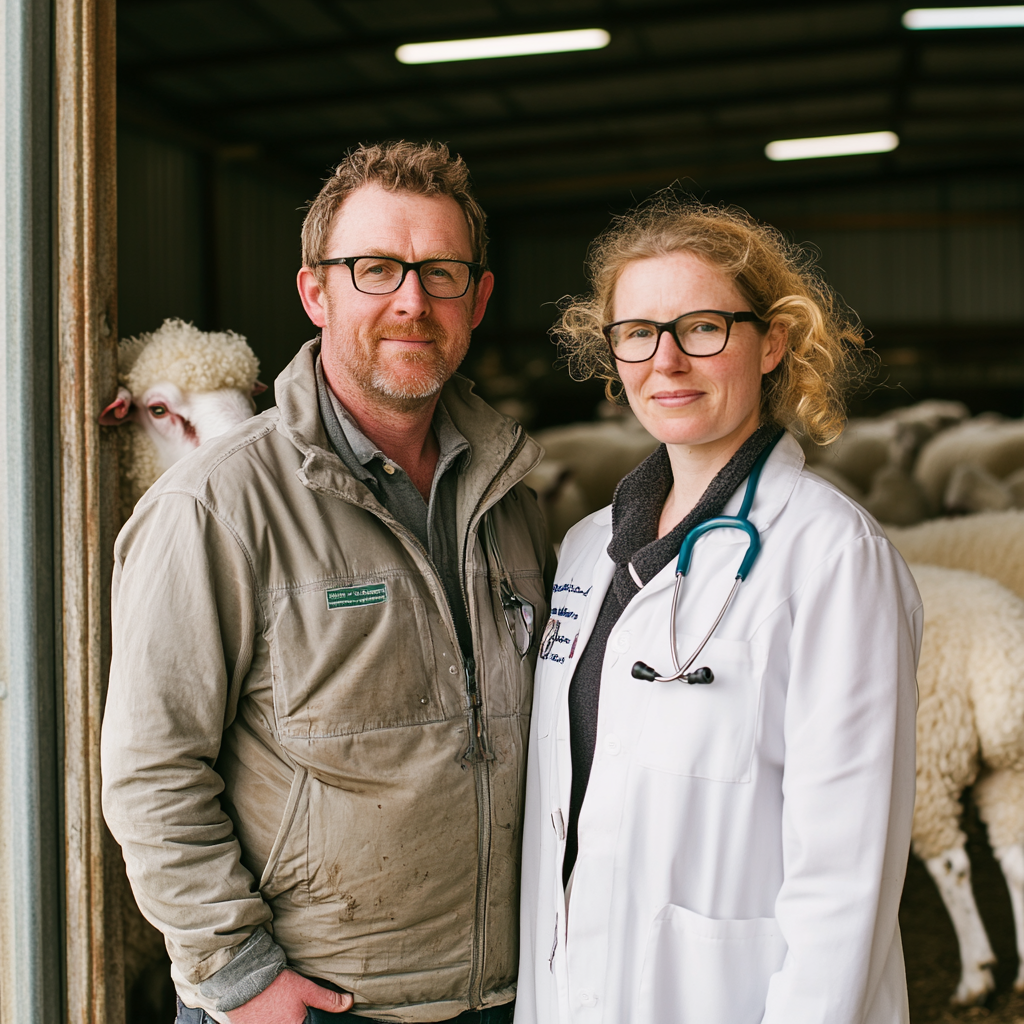
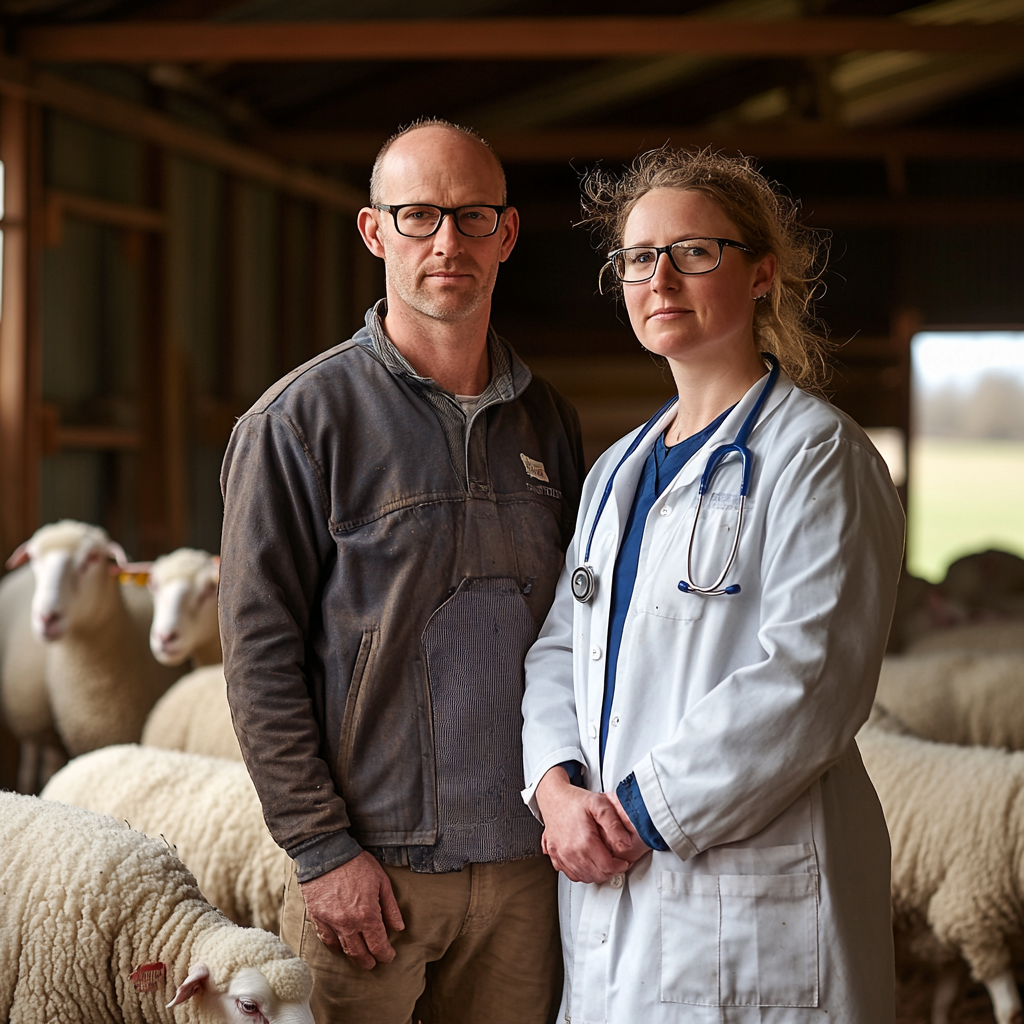
2. Viral Infections
Viral agents often serve as primary pathogens that damage respiratory defenses, paving the way for secondary bacterial infections.
Parainfluenza-3 Virus (PI3V)
- Prevalence: Serological studies indicate 60-80% of sheep flocks have been exposed
- Symptoms: Mild respiratory signs when occurring alone
- Significance: Damages respiratory cilia, facilitating bacterial invasion
- Age susceptibility: Affects sheep of all ages, but clinical disease is more common in younger animals
Respiratory Syncytial Virus (RSV)
- Characteristics: Causes inflammation of the small airways
- Clinical signs: Fever, increased respiratory rate, and coughing
- Importance: Often undiagnosed but believed to play a significant role in respiratory disease complexes
Adenovirus
- Impact: Primarily affects lambs under stress
- Pathology: Causes damage to respiratory epithelium
- Occurrence: Often associated with outbreaks in feedlot situations
3. Environmental Factors
Environmental conditions play a crucial role in predisposing sheep to pneumonia.
Poor Ventilation
Inadequate air exchange in housing facilities increases disease risk through:
- Buildup of ammonia from urine and feces
- Increased humidity, which facilitates pathogen survival
- Concentration of airborne pathogens
- Irritation of respiratory membranes
Research demonstrates that barns with less than 4-6 air changes per hour have significantly higher pneumonia rates (up to 36% higher incidence in poorly ventilated facilities).
Weather Extremes
Sudden weather changes stress the respiratory system:
- Temperature fluctuations: Rapid drops of more than 15°F (8°C) in a 24-hour period increase pneumonia risk
- Cold wet conditions: Depress immune function and increase energy requirements
- Excessive heat: Can lead to respiratory alkalosis and increased susceptibility
Dust and Irritants
Airborne particles damage protective mechanisms in the respiratory tract:
- Feed dust: Fine particles from dry feeds reach the lower airways
- Bedding dust: Particularly problematic with straw or sawdust bedding
- Chemical irritants: Disinfectants, strong cleaning products, and paint fumes
4. Management Practices
Certain husbandry practices can significantly increase pneumonia risk.
Transportation Stress
The movement of sheep induces significant stress that compromises respiratory defenses:
- Duration impact: Journeys exceeding 8 hours increase pneumonia risk by 3-4 times
- Space allowance: Overcrowding during transport increases respiratory disease rates
- Physiological changes: Elevated cortisol levels suppress immune function for 48-72 hours post-transport
Overcrowding
High stocking densities contribute to pneumonia through:
- Pathogen concentration: Higher pathogen loads in the environment
- Stress: Increased competition for resources
- Air quality: Reduced air quality and increased humidity
- Recommended space: Housing sheep with less than 15-20 square feet per adult ewe increases pneumonia risk by 25-30%
Mixing of Different Groups
Combining sheep from different sources:
- Pathogen exposure: Introduces new strains of pathogens
- Social stress: Establishment of new hierarchies causes stress
- Prevention: Quarantine periods of 30 days can reduce disease incidence by 40-60%
5. Host Factors
Individual sheep characteristics influence pneumonia susceptibility.
Age
- Young lambs: Underdeveloped immune systems make lambs particularly vulnerable
- Peak susceptibility: Highest risk occurs at 2-8 weeks of age when maternal antibodies are waning
- Older sheep: Reduced risk but still susceptible, particularly when stressed
Nutritional Status
Poor nutrition increases disease susceptibility:
- Protein deficiency: Reduces antibody production and immune cell function
- Micronutrient impact: Selenium, zinc, copper, and vitamin E deficiencies are particularly detrimental to respiratory health
- Energy balance: Negative energy balance during late pregnancy or early lactation increases susceptibility
Concurrent Diseases
Other health issues compound pneumonia risk:
- Parasitism: Heavy parasite burdens increase pneumonia susceptibility by 2-3 times
- Metabolic diseases: Conditions like pregnancy toxemia weaken immune function
- Dental problems: Poor dentition leads to reduced feed intake and weakened immunity
Clinical Signs: Recognizing Pneumonia in Your Flock
Early detection is crucial for successful intervention. The following signs may indicate pneumonia in sheep:
Early Symptoms
- Elevated respiratory rate: Normal adult sheep breathing rate is 12-20 breaths per minute; affected animals may exceed 40 breaths per minute
- Mild fever: Temperature above 103.5°F (39.7°C), normal being 101.5-103.5°F (38.6-39.7°C)
- Decreased appetite: Subtle reduction in feed consumption, often first noticeable in lambs
- Nasal discharge: Initially clear and thin, progressing to thicker and cloudy
- Subtle behavioral changes: Slight separation from the flock or reduced movement
Advanced Symptoms
- Labored breathing: Distinct abdominal breathing pattern with extended neck
- Severe coughing: Persistent, productive cough
- High fever: Temperatures reaching 104-106°F (40-41.1°C)
- Complete anorexia: Refusal to eat
- Mouth breathing: Open-mouth breathing indicating severe respiratory distress
- Frothy nasal discharge: Typically mucoid and may contain blood
- Depression: Extreme lethargy and unresponsiveness
- Blue mucous membranes: Cyanosis indicating severe oxygen deprivation
Different Presentations by Age
In Lambs
- Typically more acute onset
- Higher mortality rates (can reach 20-30% without treatment)
- More obvious fever and respiratory distress
- Faster progression from initial symptoms to severe disease
- More likely to show growth stunting after recovery
In Adult Sheep
- Often more chronic presentation
- Lower mortality but significant morbidity
- More coughing and less obvious fever
- May maintain appetite longer into the disease
- Greater economic impact through reduced reproduction
Diagnostic Approaches
Accurate diagnosis is essential for implementing effective treatment protocols.
On-Farm Assessment
Producers can perform initial evaluations:
- Temperature measurement: Digital rectal thermometers provide accurate results
- Respiratory rate counting: Count flank movements for 15 seconds and multiply by 4
- Lung auscultation: Using a stethoscope to detect abnormal lung sounds
- Response testing: Observe recovery time after gentle exercise
Veterinary Diagnostics
Professional veterinary evaluation may include:
- Blood work: Complete blood count showing elevated white cells (particularly neutrophils)
- Thoracic ultrasound: Non-invasive imaging of lung tissue showing consolidation
- Bacterial culture and sensitivity: Identifies specific pathogens and appropriate antibiotics
- PCR testing: Detects viral pathogens and certain bacteria
- Transtracheal wash: Collects samples directly from the lower respiratory tract
- Post-mortem examination: Provides definitive diagnosis in fatal cases
Prevention Strategies for Pneumonia in Sheep
Preventing pneumonia is far more cost-effective than treating outbreaks. Implement these strategies to protect your flock:
Housing and Environment Management
Creating optimal living conditions significantly reduces pneumonia risk:
Ventilation Optimization
- Design principles: Provide 4-6 air changes per hour without creating drafts
- Ridge vents: Install properly sized openings at barn peaks
- Side openings: Adjustable side panels allow airflow regulation
- Airflow indicators: Smoke tests can visualize air movement patterns
- Mechanical options: Fans may be necessary in enclosed buildings
Stocking Density Control
- Space requirements: Allow 15-20 square feet per adult ewe in enclosed housing
- Feeder space: Provide 16-18 inches of feeder space per adult sheep
- Group sizing: Maintain smaller group sizes (under 50) when possible
Bedding Management
- Material selection: Use low-dust bedding materials
- Maintenance schedule: Add fresh bedding before soiling becomes excessive
- Moisture control: Ensure proper drainage and address leaks promptly
- Complete cleanout: Perform thorough cleanouts between groups or annually
Nutritional Management
Proper nutrition bolsters immune function and respiratory health:
Balanced Ration Formulation
- Protein adequacy: Ensure 14-18% crude protein for growing lambs
- Energy sufficiency: Maintain body condition score of 2.5-3.5 on a 5-point scale
- Fiber requirements: Provide sufficient effective fiber to maintain rumen function
Micronutrient Supplementation
- Selenium: Critical in many regions with deficient soils (0.1-0.3 ppm in total ration)
- Vitamin E: Synergistic with selenium (20-30 IU/kg body weight daily)
- Copper: Required for immune function but toxic in excess (8-10 ppm for most breeds)
- Zinc: Supports respiratory epithelium (50 ppm in total ration)
Water Quality and Availability
- Accessibility: Provide 1 gallon per day per adult sheep
- Cleanliness: Clean troughs weekly to prevent biofilm formation
- Temperature: Ensure water doesn’t freeze in winter months
- Positioning: Place waterers to minimize bedding contamination
Biosecurity Measures
Preventing pathogen introduction is fundamental to pneumonia prevention:
Quarantine Protocols
- Duration: Isolate new animals for minimum of 30 days
- Separation distance: Maintain at least 30 feet from main flock
- Monitoring regime: Check temperatures daily during quarantine
- Testing options: Consider testing for specific pathogens before integration
Visitor Policies
- Boot disinfection: Provide foot baths with appropriate disinfectants
- Protective clothing: Supply clean coveralls for visitors
- Access restrictions: Limit unnecessary visits to sheep areas
- Visit scheduling: Schedule visits to youngest or most valuable animals first
Transportation Management
- Journey planning: Minimize transport duration and stops
- Vehicle sanitation: Clean and disinfect trailers between groups
- Loading density: Provide adequate space during transport
- Recovery period: Allow 48-72 hours of rest after transport before handling
Vaccination Programs
Strategic vaccination can significantly reduce pneumonia incidence:
Available Vaccines
- Mannheimia/Pasteurella vaccines: Commercial products targeting the most common bacterial pathogens
- Custom/autogenous vaccines: Developed from pathogens isolated from your specific flock
- Combination products: Often include clostridial disease protection
Vaccination Protocols
- Breeding ewes: Vaccinate 4-6 weeks pre-lambing to boost colostral antibodies
- Lambs: Initial vaccination at 4-6 weeks with booster 2-4 weeks later
- Feedlot lambs: Vaccinate upon arrival and booster 2-3 weeks later
- Annual boosters: Provide yearly reinforcement to maintain immunity
Vaccine Handling and Administration
- Storage requirements: Maintain proper refrigeration (36-46°F/2-8°C)
- Administration route: Follow label directions precisely
- Equipment sanitation: Use clean needles and syringes
- Record keeping: Document all vaccinations with dates and serial numbers
Treatment Methods for Pneumonia in Sheep
Despite prevention efforts, pneumonia cases may still occur. Prompt, appropriate treatment is essential for successful outcomes.
Antimicrobial Therapy
Antibiotics remain the cornerstone of pneumonia treatment:
Antibiotic Selection
- First-line options: Oxytetracycline, florfenicol, and tilmicosin are commonly effective
- Secondary choices: Ceftiofur, tulathromycin, and gamithromycin for resistant cases
- Administration routes: Long-acting injectable formulations often preferred
- Treatment duration: Continue for at least 48 hours after symptoms resolve
Considerations for Antibiotic Use
- Withdrawal periods: Strictly observe meat and milk withholding times
- Resistance concerns: Use culture and sensitivity when possible to guide selection
- Extra-label usage: Ensure proper veterinary oversight for drugs not specifically labeled for sheep
- Record keeping: Document all treatments with drug, dose, route, and date
Supportive Care
Supplementary treatments improve recovery rates:
Anti-inflammatory Therapy
- Options: Non-steroidal anti-inflammatory drugs like flunixin meglumine or meloxicam
- Benefits: Reduce fever, improve comfort, and decrease lung inflammation
- Dosing: Follow veterinary guidance for appropriate dosing
Fluid Support
- Oral electrolytes: For mild cases with maintained swallowing ability
- Subcutaneous fluids: Isotonic solutions can provide hydration support
- Volume guidelines: 20-40 ml/kg body weight depending on dehydration severity
Nutritional Support
- Palatable feeds: Offer highly digestible, appealing feedstuffs
- Force feeding: May be necessary in severe cases via stomach tube
- Energy supplements: Propylene glycol (15-30 ml twice daily) for energy
Group vs. Individual Treatment Approaches
Management decisions depend on outbreak characteristics:
Mass Medication
Appropriate when:
- Multiple animals showing clinical signs (>10% of group)
- Early intervention is possible
- Similar age/weight animals in the group
- Methods include:
- Water medication (where drinking is maintained)
- Feed medication (for animals still eating)
- Strategic group injection of at-risk animals
Individual Therapy
Necessary when:
- Isolated cases identified
- Advanced disease requiring intensive care
- Valuable breeding stock affected
- May include:
- Higher-tier antibiotics
- More frequent monitoring
- Injectable nutritional support
- Isolation to reduce spread and competition
Evaluating Treatment Success
Monitoring response to therapy guides ongoing management:
- Temperature response: Should normalize within 24-48 hours
- Respiratory rate improvement: Expect gradual reduction over 2-3 days
- Return to feeding: Typically occurs within 48 hours of effective treatment
- Setbacks: Temperature spikes or increased respiratory effort warrant treatment reassessment
- Recovery timelines: Full clinical recovery typically takes 7-10 days
Economics of Pneumonia in Sheep Flocks
Understanding the financial impact helps prioritize prevention efforts:
Direct Costs
- Mortality losses: Value of sheep that die (approximately $250-350 per breeding ewe)
- Treatment expenses: Medication costs ($3-8 per affected animal)
- Veterinary services: Professional diagnosis and treatment ($100-200 per farm visit)
- Labor requirements: Additional time for treatment and monitoring (2-3 hours daily during outbreaks)
Indirect Costs
- Reduced growth rates: 15-30% lower average daily gain in recovered lambs
- Decreased feed efficiency: Requires 0.5-1.5 additional pounds of feed per pound of gain
- Reproductive impacts: 10-15% lower conception rates in affected ewes
- Chronic production losses: Lung damage may permanently reduce performance
- Market timing disruption: Delayed finishing of market lambs
Cost-Benefit Analysis of Prevention
Research indicates that comprehensive prevention programs are highly cost-effective:
- Return on investment: $3-5 for every $1 spent on prevention
- Vaccination economics: Annual vaccination costs ($2-3 per head) versus treatment costs ($8-15 per affected animal)
- Housing improvements: Ventilation upgrades typically pay for themselves within 2-3 years through reduced disease incidence
Recommended Products for Sheep Pneumonia Management
Recommended Products on Amazon
- Durvet Duramycin-72 Oxytetracycline HCL Soluble Powder: Water-soluble antibiotic for treating respiratory infections in sheep
- Manna Pro Therabloat for Sheep: Aids in alleviating bloat that can accompany respiratory distress
- Nutri-Drench for Sheep & Goats: Provides essential nutrients to support recovery in sick animals
- Prima Tech Auto-Injector: Simplifies administration of injectable antibiotics for flock treatment
Frequently Asked Questions
How contagious is pneumonia in sheep?
Pneumonia in sheep is highly contagious, particularly when caused by agents like Mycoplasma ovipneumoniae or respiratory viruses. Infected animals can spread the disease through direct contact, respiratory droplets, and shared feeding or watering equipment. In naive flocks, infection rates may reach 70-90% within 7-14 days of introduction. The contagiousness varies by pathogen, with bacterial pneumonia generally being less rapidly transmitted than viral or mycoplasmal forms.
Can sheep recover from pneumonia without treatment?
Mild cases of pneumonia, particularly those caused by viral agents, may resolve without treatment in healthy adult sheep with strong immune systems. However, untreated pneumonia carries significant risks including:
- Progression to severe disease with 30-70% mortality
- Development of chronic lung abscesses
- Permanent lung damage reducing lifetime productivity
- Spread to other susceptible animals
Even apparently recovered animals may harbor pathogens that can cause future outbreaks or affect newborn lambs. For these reasons, proper veterinary treatment is strongly recommended even for mild cases.
How long does it take for sheep to recover from pneumonia?
Recovery timelines vary based on several factors:
- Mild cases with prompt treatment: 5-7 days for clinical recovery
- Severe cases with timely intervention: 10-14 days for clinical improvement
- Complicated or chronic cases: 3-4 weeks or longer, with some animals never fully recovering
Complete resolution of lung lesions typically takes 4-6 weeks even after clinical signs disappear. During this recovery period, animals remain vulnerable to reinfection or relapse, particularly when stressed.
Can humans catch pneumonia from infected sheep?
Most pathogens causing ovine pneumonia are species-specific and pose minimal zoonotic risk to humans. However, certain agents such as Coxiella burnetii (Q fever) and some Chlamydia species can cause respiratory disease in both sheep and humans. People with compromised immune systems should take extra precautions when working with sheep showing respiratory signs, including:
- Wearing appropriate PPE (masks, gloves)
- Practicing good hand hygiene
- Ensuring adequate ventilation in enclosed spaces
- Seeking medical attention if developing fever or respiratory symptoms after exposure
What is the best antibiotic for sheep pneumonia?
The optimal antibiotic depends on the specific pathogens involved and their sensitivity patterns. Common effective options include:
- Oxytetracycline: Long-acting formulations provide 48-72 hours of coverage
- Florfenicol: Excellent lung penetration against Mannheimia and Pasteurella
- Tulathromycin: Single-dose effectiveness against many respiratory pathogens
- Ceftiofur: Broad-spectrum activity for complex infections
Veterinary guidance is essential, as regional resistance patterns vary and extra-label drug use requires professional oversight. The best approach often involves culture and sensitivity testing to identify the most effective treatment for specific outbreaks.
The Future of Pneumonia Management in Sheep
Emerging Research and Technologies
The field of ovine respiratory disease management continues to evolve:
- Rapid diagnostics: PCR panels allowing same-day pathogen identification
- Immunomodulatory therapies: Targeted immune stimulants to enhance natural defenses
- Precision antibiotics: Narrower spectrum drugs with reduced resistance concerns
- Genomic selection: Breeding for enhanced respiratory disease resistance
- Remote monitoring systems: Smart technologies for early detection of respiratory changes
Climate Change Implications
Changing weather patterns are altering pneumonia dynamics:
- Extended seasons: Longer periods of pneumonia risk in many regions
- New pathogen distribution: Altered geographic range of certain pathogens
- Stress factors: More extreme weather events increasing respiratory challenge
- Management adaptations: Need for flexible housing and grazing systems
Conclusion
Pneumonia in sheep presents a significant challenge to flock health and profitability, but with comprehensive understanding and proactive management, its impact can be substantially mitigated. By implementing strategic prevention measures focusing on environmental management, nutrition, biosecurity, and vaccination, producers can significantly reduce pneumonia incidence. When cases do occur, prompt recognition and appropriate treatment protocols maximize recovery chances and minimize economic losses.
The key to success lies in viewing pneumonia not as an inevitable part of sheep production but as a manageable health condition requiring integrated approaches. By staying informed about emerging research and technologies, sheep producers can continue to improve respiratory health management and ensure the sustainability of their operations.
For more expert guidance on sheep health management and disease prevention, visit BlithePet for additional resources, tools, and personalized recommendations to keep your flock thriving.

